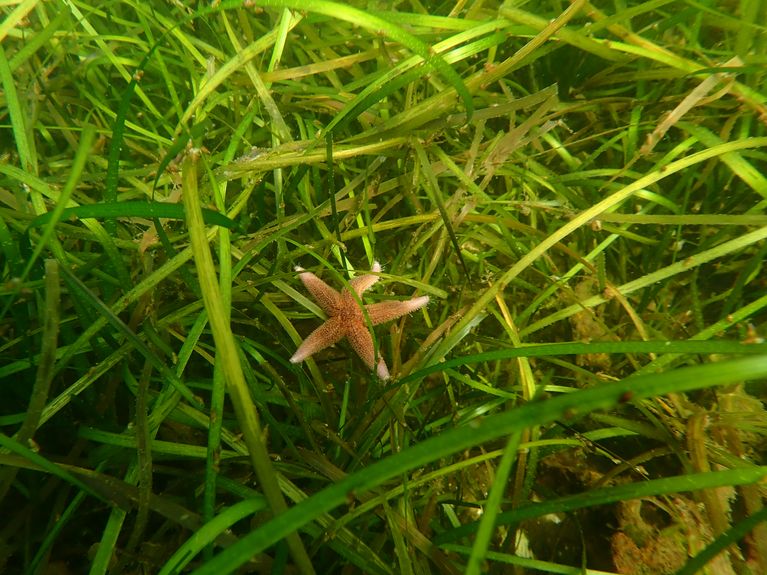
Challenge #16
Expanding natural carbon storage in the Baltic Sea.
Seagrass meadows help remove CO2 from the atmosphere. We are measuring how much CO2 those in the Baltic Sea could store and absorb from the atmosphere per year if we selectively expand them.
Participating centers
Seagrass meadows are all-rounders: they serve as centers for biodiversity, provide a habitat for fish stocks, condition water quality – and crucially, can help mitigate climate change. This is because they bind organic carbon and store it in the seabed. On the German Baltic coast, seagrass meadows currently cover an area of 285 square kilometers. In several dives, the scientists of the Marine Evolutionary Ecology research group at GEOMAR Helmholtz Centre for Ocean Research Kiel have collected and analyzed seabed samples.
Because of these studies, we now know that sediments beneath seagrass meadows can store 2 to 60 times more organic, or “blue,” carbon than sediments without seagrass. If we preserve and restore seagrass meadows, we can expand the habitats along the German coastline to 3,064 square kilometers. This would allow up to 404 kilotons of CO2 to be bound per year. Part of our plan is to involve amateur divers in Germany to help in monitoring the newly restored seagrass meadows and to help with the planting of seagrass – like an underwater community garden.
(Header: Tadhg O Corcora)